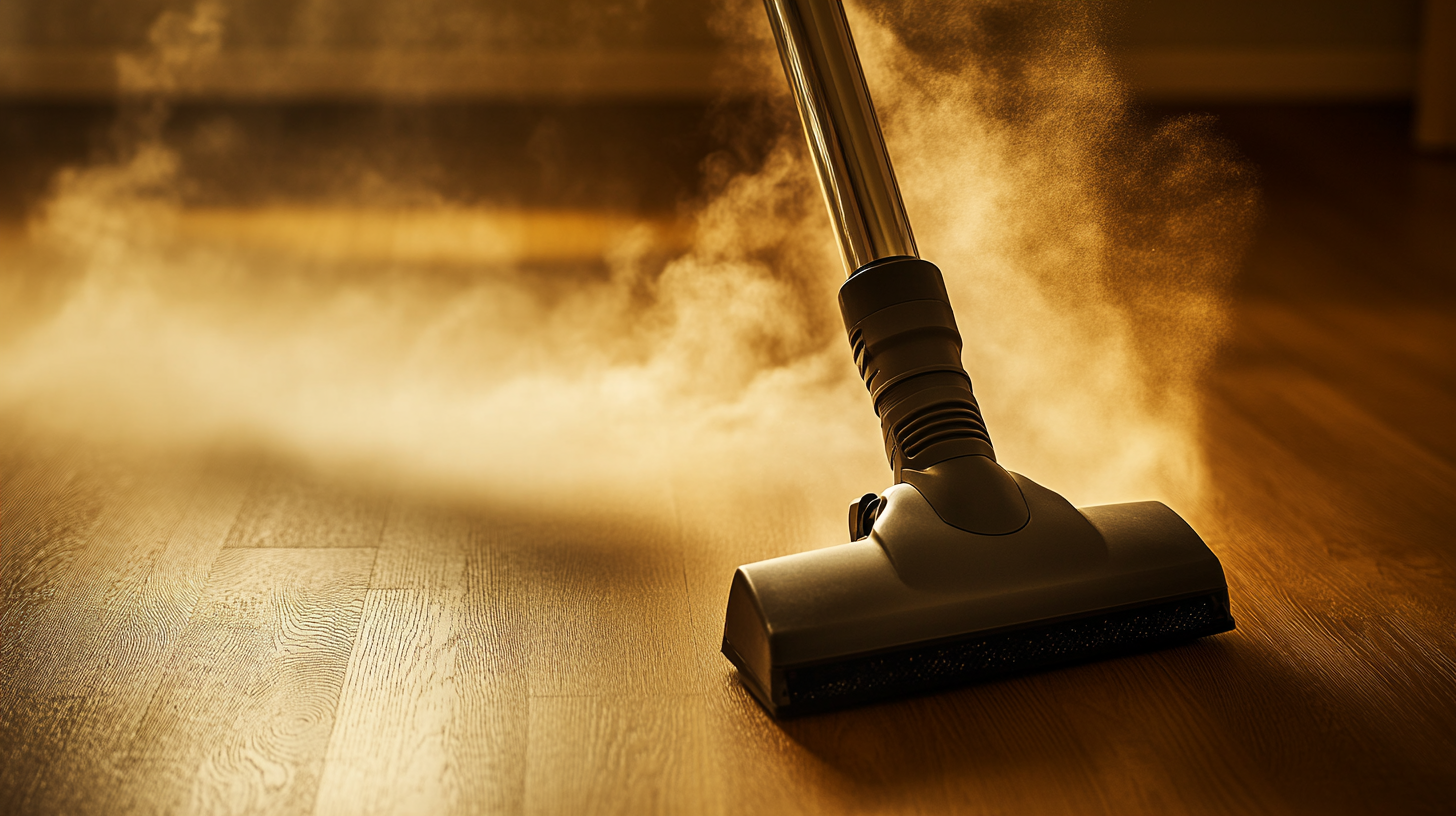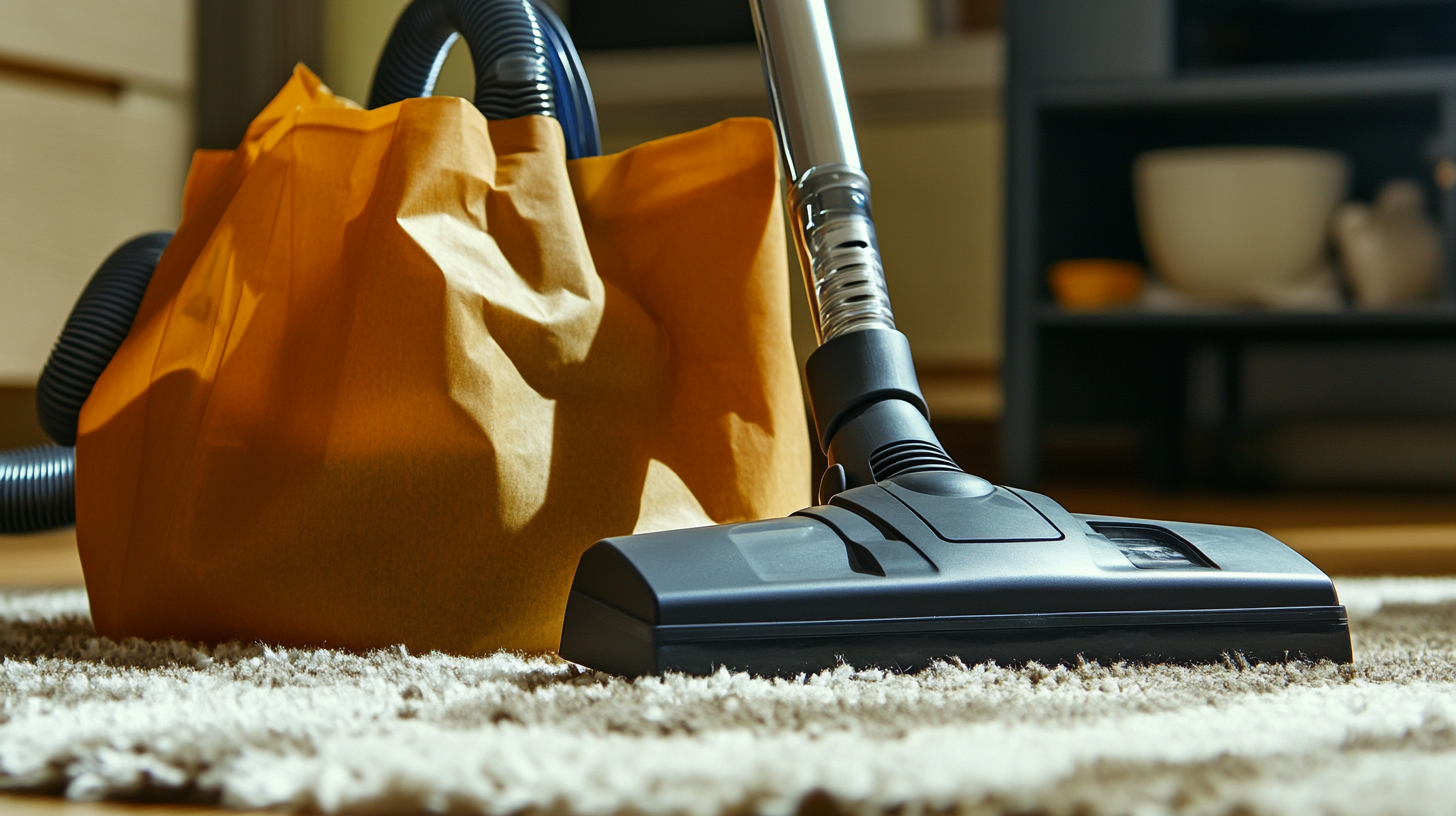As the vacuum cleaner industry continues to evolve, the demand for efficient and effective cleaning solutions remains paramount. According to a recent market analysis, it is projected that the global vacuum cleaner market will reach USD 16.4 billion by 2025, with a significant rise in consumer preference for paper dust bags for vacuum cleaners due to their superior filtration capabilities and ease of disposal. Research indicates that paper dust bags can capture up to 99% of allergens and dust particles, which is imperative for maintaining indoor air quality and hygiene. This blog will explore the top strategies for selecting the best paper dust bag for your vacuum cleaner, ensuring optimal performance and satisfaction in an ever-competitive marketplace.

When selecting the best paper dust bag for your vacuum cleaner in 2025, several key features must be considered to enhance vacuum performance. According to a report by the Vacuum Cleaner Manufacturers Association (VCMA), effective filtration is paramount, with HEPA filters being a top choice. These filters can capture up to 99.97% of particles as small as 0.3 microns, ensuring that allergens and dust are effectively contained within the bag. This is particularly important for households with allergy sufferers, as improper filtration can exacerbate symptoms.
Furthermore, the design and compatibility of paper dust bags significantly impact their effectiveness. A study by Consumer Reports found that vacuum cleaners using specially designed paper bags can improve suction power by up to 25% compared to non-bagged models. Look for features such as reinforced seams and multi-layer filtration, which contribute to durability and enhanced dust retention. Additionally, make sure the bag design is compatible with your vacuum model to prevent any loss of suction or effectiveness, allowing you to maintain optimal performance year-round.
When it comes to vacuum cleaners, choosing the right paper dust bag can significantly affect performance and dust filtration efficiency. A comparative analysis of HEPA (High Efficiency Particulate Air) dust bags versus standard paper dust bags reveals notable differences in their ability to capture dust and allergens. HEPA dust bags are designed to capture 99.97% of particles as small as 0.3 microns, making them ideal for households with allergies or respiratory issues. They ensure that even the tiniest dust and dander are contained, reducing the likelihood of these particles being released back into the air during vacuum operation.
In contrast, standard paper dust bags often lack the same level of filtration capability. While they do an adequate job of trapping larger dust particles, standard bags may allow smaller allergens to escape, making them less effective in maintaining a clean indoor environment. This is particularly important for allergy sufferers or those concerned about air quality. When selecting a dust bag, considering the specific needs of your household and understanding the filtration efficiency of each option can lead to a healthier living space and improved vacuum performance.
This bar chart compares the dust filtration efficiency of HEPA dust bags and standard paper dust bags. The HEPA dust bag is highly effective, capturing 99.97% of particles, while standard paper dust bags offer a lower efficiency of 75%.
In recent years, the vacuum cleaner industry has seen a significant shift towards environmentally friendly products, with biodegradable paper dust bags gaining popularity. These innovative bags not only perform well in trapping dust and allergens, but they also offer an eco-conscious alternative to traditional plastic bags. As consumers become more aware of their carbon footprint, the demand for sustainable vacuum cleaner accessories continues to rise, making it essential to consider biodegradable options when purchasing paper dust bags.
When selecting the best paper dust bag for your vacuum cleaner, it's crucial to look for bags made from high-quality, biodegradable materials. Ensure that the bags are certified and meet environmental standards for compostability. Additionally, consider the bag's dust retention capacity and compatibility with your vacuum model, as these features can influence cleaning efficiency and convenience.
Tip: Always check for the presence of HEPA filters in biodegradable bags. This addition can significantly enhance air quality during vacuuming by capturing microscopic particles. Another tip is to evaluate the packaging of the dust bags; eco-friendly brands often use minimal and recyclable packaging, reflecting their commitment to sustainability. By making informed choices, you can contribute to a healthier environment while keeping your home clean.

When selecting the best paper dust bag for your vacuum cleaner, one of the most critical factors to consider is the balance between cost and quality. While it might be tempting to opt for cheaper options, investing in premium paper dust bags can yield significant long-term benefits. High-quality dust bags are designed to trap finer particles and allergens more effectively, resulting in better indoor air quality and a healthier living environment.
Furthermore, premium bags tend to have a larger capacity and enhanced durability, meaning they can handle more debris before needing replacement.
Additionally, evaluating the long-term value of these bags is crucial. Cheaper dust bags may require more frequent changes, leading to increased costs over time. In contrast, premium bags often offer superior filtration and longevity, allowing you to change them less frequently. This not only saves money in the long run but also contributes to less waste, aligning with an environmentally conscious approach.
Ultimately, the choice between cost and quality should prioritize long-term value, ensuring both effective cleaning performance and a healthier home atmosphere.
As the vacuum cleaner market evolves, consumer preferences are increasingly driving the innovation of paper dust bags. A recent report by Grand View Research highlights that the global vacuum cleaner market is expected to reach $17.5 billion by 2025, with a significant portion attributed to increased consumer demand for efficient and sustainable cleaning solutions. This demand is pushing manufacturers to innovate beyond traditional designs. For instance, new paper dust bags are being engineered with advanced filtration technologies, appealing to health-conscious consumers who prioritize air quality and allergens reduction in their homes.
Additionally, the shift towards eco-friendly products is reshaping the design and materials used in paper dust bags. According to a survey conducted by Statista, about 67% of consumers cited environmental impact as a key factor in their purchasing decisions. This has prompted brands to explore recyclable materials and biodegradable options in their dust bag designs, setting them apart in an increasingly competitive marketplace. As we move closer to 2025, manufacturers who align their products with these consumer trends will likely lead the way in market share and customer loyalty.

